Blinded Protester Arrested By Iranian Regime, His Whereabouts Remain Unknown
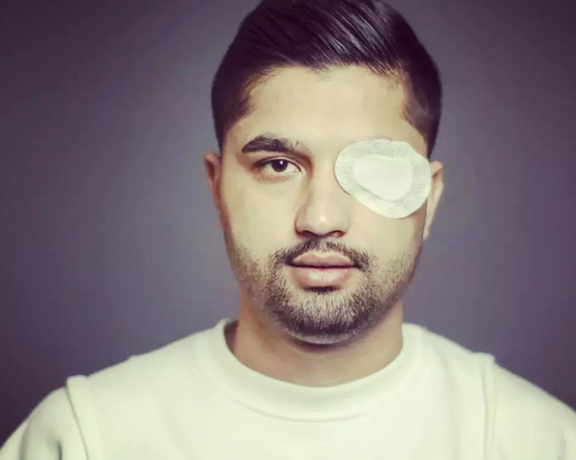
An Iranian protester, who lost an eye by a bullet fired by government agents, was arrested on Friday and there is no information about his whereabouts.

An Iranian protester, who lost an eye by a bullet fired by government agents, was arrested on Friday and there is no information about his whereabouts.
Amir Velayati, a 24-year-old man, who lost his eye during the first week of protests triggered by the September death of Mahsa Amini, was detained as the Iranian regime intensified pressures against protesters.
According to one of his friends, Velayati was rejected by several hospitals when he was injured but finally was admitted to one where he was told a pellet was lodged 1 millimeter away from his brain, Iran Wire reported in March.
Harsh Naqshbandi, an actor and theater director is another victim who lost an eye and was arrested in recent days with no information about his current whereabouts either.
Parsa Ghobadi, another protester who lost both eyes, was detained along with his brother recently. He was released after a few days, but his brother is still in custody.
Meanwhile, Iran International's sources report threatening phone calls from security organizations to women whose eyes were damaged in last year's nationwide protests, asking them not to write anything about their injury on social media.
Last month, a report by Norway-based Iran Human Rights confirmed earlier speculations that the Islamic Republic security forces have been systematically targeting protesters’ eyes.
The human rights group documented over 20 cases of people being blinded in one eye as a result of fire from the security agents during protests, adding that initial data indicates young women were disproportionately represented among people who had sustained such injuries.
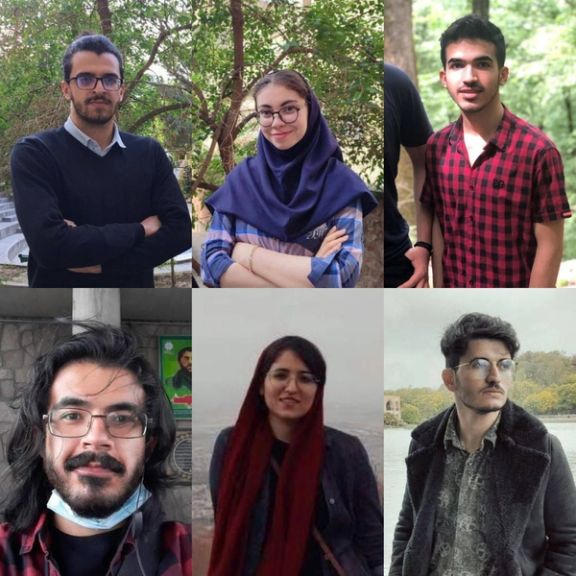
Eight students have been deprived of education for up to two years or exiled to other cities as punishment for protesting the wave of chemical attacks in Iran's universities and schools.
The students of Tabriz University of Medical Sciences received the punishments for participating in a rally back in March against attacks which have affected thousands of girls across the country.
Last week, over 2,000 students signed a petition demanding the cancellation of the heavy sentences of the disciplinary committee against their colleagues.
Close to 300 schools were targeted in the past Iranian year without any apparent serious effort by the government to identify and pursue the perpetrators, nor to explain to terrified parents and students what was happening.
A new wave of chemical attacks began after the new year holidays in late March.
Thousands of students have been affected, mostly girls, with hundreds hospitalized and symptoms including respiratory distress, numbness in their limbs, heart palpitations, headaches, nausea, and vomiting.
Iran's student movement gained momentum last year amid the "Woman, Life, Freedom" protests following the death in custody of Mahsa Amini. Universities were the scene of large anti-regime demonstrations.
According to the US-based Human Rights Activists News Agency (HRANA), 637 students from 144 universities have been arrested since mid-September.
Some sources inside Iran have also announced that the number of detained students is more than 700.

An Iranian prisoner on death row has died of cardiac arrest caused by the stress of imminent execution, a rights group reported.
Milad Bahmanzadeh, who had been convicted of murder and sentenced to death, died of a heart attack in Tabriz prison northwest of Iran because of the huge stress and anxiety of his possible execution, Hengaw Organization reported.
Bahmanzadeh lost his life on Sunday, hours after he was transferred to the special ward where prisoners on death row are held.
Over the past few weeks, the Islamic Republic has hanged dozens of prisoners, including protesters, as part of an execution spree widely condemned by the international community.
The number of executions in Iran started to rise after President Ebrahim Raisi – the former head of the country’s notorious judiciary -- took office in August 2021 but the recent exponential spike has triggered concern at home and abroad.
The United Nations said earlier this month that Iran has executed 209 people so far this year, calling the record "abominable". The number has further grown in recent days, particularly with the regime's execution of three political prisoners Majid Kazemi, Saleh Mirhashemi and Saeed Yaghoubi.
Last week Amnesty International condemned the execution spree, and said it "opposes the death penalty in all cases without exception, regardless of the nature or circumstances of the crime; guilt, innocence or other characteristics of the individual; or the method used by the state to carry out the execution."

A group of female political prisoners in Tehran’s Evin Prison staged a sit-in to protest recent executions, saying the regime wants to frighten people into submission.
“The regime is taking revenge for the revolutionary movement by executing and killing people,” human rights activist Narges Mohammadi told inmates who gathered Saturday evening at the courtyard of the women’s ward to protest the execution of three political prisoners in Esfahan Friday.
Mohammadi argued that unlike the 1980s when the regime executed thousands of political prisoners to establish and stabilize its tyranny, the recent executions will only strengthen the people’s determination to overthrow the Islamic Republic.
Majid Kazemi, Saeed Yaghoubi and Saleh Mirhashemi were handed down the death sentence in a trial condemned as a travesty of justice by human rights campaigners, who say the prisoners were tortured into confessions, and there is no reliable evidence against them.
The three men were convicted over the death of two IRGC’s Basij militia members and a police officer during protests last November in Esfahan. Leaked audio from police radio chatter from the night the three regime agents were killed indicates that they were shot by friendly fire of plainclothes forces. The accused even had alibis for the time the agents were killed, with the family of one of the victims claiming there was CCTV video footage of their son at work.
Friday's executions brought to at least seven the number of protesters hanged since the beginning of the nationwide protests last September, which turned into one of the boldest challenges to the clerical rulers since the 1979 revolution. The protests were ignited by Mahsa Amini's death in the custody of Iran's morality police.
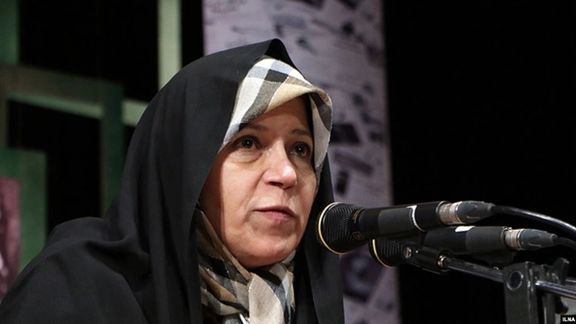
“Execution and taking people’s lives has turned into a despicable everyday practice in the Islamic Republic,” Faezeh Hashemi, the daughter of former President Akbar Hashemi-Rafsanjani said at the same gathering. “Execution of three protesters in Esfahan [last week], two in Tehran [in December], executions of 209 in five months, 580 in one year, 14 executions in one day, 22 executions in two weeks…,” she went on to say.
Hashemi accused the regime of using executions to “shut the mouths of critics and dissidents and to escape accountability over the appalling situation in the country” and it also signals the regime’s fear of the people.
She denounced executions “under any pretext, including for impertinence against the prophet, insult against sanctities, taking up arms against the regime, blasphemy, corruption on earth and even for drug trafficking” because, she said, “justice has been taken to the slaughterhouse”.
Hashemi, a former lawmaker who launched Zan daily for women during the presidency of reformist President Mohammad Khatami in late 1990s, is an outspoken critic of Supreme Leader Ali Khamenei.
Activists and politicians at home and abroad, as well as family members of protesters killed by the regime have extensively condemned the recent executions. Several neighborhoods in the capital Tehran, Esfahan and in a few other cities were scenes of protests against the regime’s executions last week. Students at universities across Iran also staged demonstrations.
Over 170 activists and politicians in Iran in a joint statement released Sunday dubbed the executions a “systematic murder by the government and demanded the immediate annulment of all death sentences.
A group of political prisoners including reformist politician Mostafa Tajzadeh, also an outspoken critic of Khamenei, said in a separate statement that the regime is using executions “as a tool of suppression and to cover up political, economic and social challenges and crises.”
Friday’s executions also sparked outrage among Western governments and people around the world.
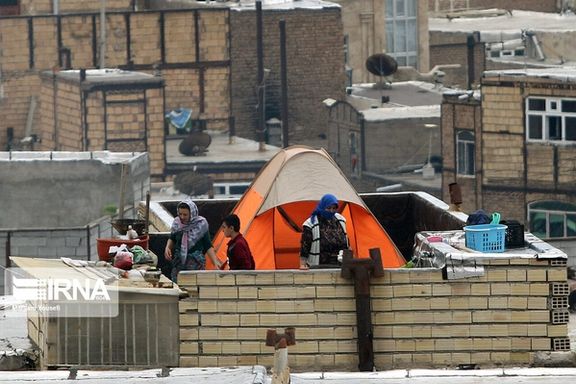
A prominent economist in Iran says high rents in Tehran push many tenants to the less expensive margins of the capital where a new social sub-class is taking shape.
In an interview with Didban Iran website, Hossein Raghfar, said as the number of those living in the margins of Iran's major cities is on the rise, there is an increased possibility of new protest movements that will take the officials by surprise.
Raghfar said, "this might happen any moment. The people are badly vulnerable and price rises have brought them to the verge of a revolt. In the meantime, officials appear to be oblivious to the looming threat."
The economist warned: "Unpredictable unrest is likely to take place. What you saw in last year's protests was only the tip of the iceberg."
The website quoted the Central Bank of Iran as reporting that rents in the Iranian capital rose by 46 percent during the first half of last year. This comes while the government had allowed landlords to increase the rents by just 25 percent. As a result, wrote the website, many have decided to live outside Tehran, and some have chosen to live in makeshift houses built on some of Tehran's rooftops.
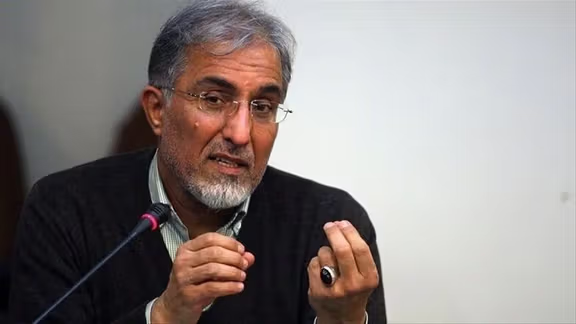
Iran has been gripped by very high inflation since 2018 when the United States withdrew from the JCPOA nuclear deal and imposed tough economic sanctions. A recent report indicated that the inflation rate is close to 70 percent.
The website wrote that more than 24 million Iranians are feeling the crunch this year as rents are going to go up once again with the beginning of the summer. Raghfar said skyrocketing rents is one of the results of rising house prices that have also led to rising prices for other goods and services. For instance, nearly 50 percent of the price of clothing people buy is used to cover the clothing shops' rents. He added that the rising cost of housing has even led some young Iranians to leave the country for good.
He also mentioned the social problems that occur as a result of rising housing cost: "Some sleep in the buses and some families share a house with another family." This, he said, marks the failure of government policies during the past three decades.
The Secretary of Trade Union of Real Estate Agents Saeed Lotfi told reporters that in parts of the Iranian capital, rents are paid in US dollars rather than the extremely devalued national currency rial. He also confirmed that some of the tenants are being pushed out of the capital and that some others share a house with another family although he said the union is against the idea of house sharing.
"Until a few years ago, there were lots of houses available for rent in southwest Tehran, but nowadays it is really difficult to find a vacant house for families who need it as many of those who were not able to afford high rents in the affluent parts of Tehran have moved to the southwest suburbs," Lotfi said.
He added that many others have chosen to move to much smaller homes as prices and rents rise. Lotfi pointed out that current prices will certainly rise further as “we have not yet reached the peak of housing market which is around September when schools re-open” for the new academic year.
Earlier reports in mid-2022 indicated that there was a more than 300 percent rise in rents in Tehran in a matter of three years. And figures released in December 2021, some six months after Ebrahim Raisi took office as President indicated that food and housing expenses in Iran had risen between 300 to 740 percent during the preceding six years while wages went up by around only 270 percent during the same period.

A regime critic slammed the execution of protesters by the regime, saying the overthrow of the Islamic Republic is "not far away."
The Islamic revolutionary turned regime critic, Abolfazl Qadiani (Ghadyani) said in a message that the most peaceful and non-violent way to change the system is for Supreme Leader Ali Khamenei to "resign and surrender to the nation.”
“Khamenei should repent and seek forgiveness and get out of the way of the nation so that the people can establish their desired system by holding a free referendum, which I believe is a secular democratic republic based on human rights," he said.
The political activist added that the solution is peaceful, non-violent revolution.
Qadiani belonged to a leftist, revolutionary group that was supporting Khamenei until the disputed presidential election of 2009, when the Supreme Leader backed the questionable reelection of Mahmoud Ahmadinejad. Qadiani, with many others, protested the results and was jailed to become an opposition figure.
As part of his open letter, Qadiani strongly slammed the execution of three demonstrators Majid Kazemi, Saeed Yaghoubi and Saleh Mirhashemi.
“Such crimes make people more infuriated and more determined to overthrow the bloodthirsty dictator and his suffocating system,” added Qadiani.
Qadiani has recently accused Ali Khamenei of being the main suspect in the poisoning of schoolgirls across the country, saying he is taking a "revenge" against the "Woman, Life, Freedom" movement.